Taxidermy mount of beloved dog rediscovered in Victoria after nearly 70 years
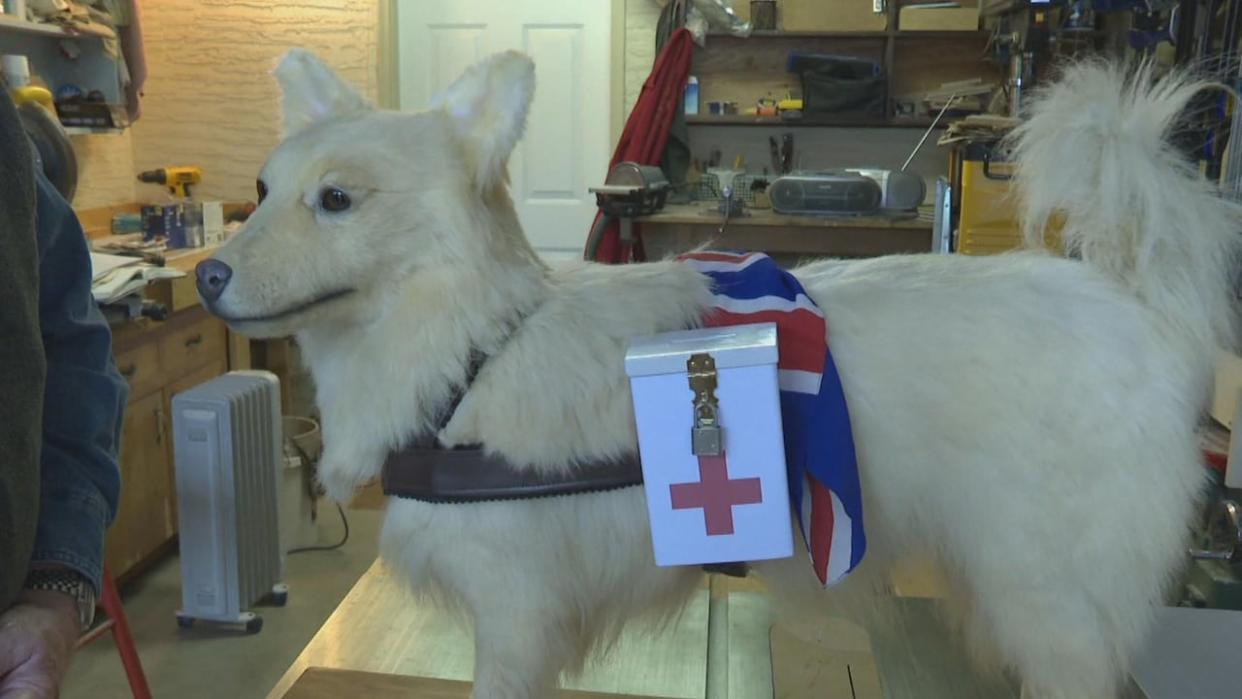
A Victoria dog known for helping raise money for the Canadian Red Cross during the First World War, who was preserved through taxidermy after his death, has been found after almost seven decades.
Muggins was trained to walk around B.C.'s capital with two donation boxes tied to his back, collect money for troops fighting abroad, and to return to his owner, deposit the donations and resume his rounds — something that earned him fame and admiration on Vancouver Island.
According to the Red Cross, the tiny white spitz's efforts helped raise $21,000, equivalent to around $330,000 in 2023.
After Muggins died in 1920 at the age of seven, he was preserved through taxidermy and put on display at the B.C. Legislative Assembly, where the mount — what the preserved animal is called — was also used to solicit donations for troops during the Second World War.
Shortly after, around 1955, Muggins' mount disappeared from public view — until late 2023, when he was unearthed in a Victoria-area shed.
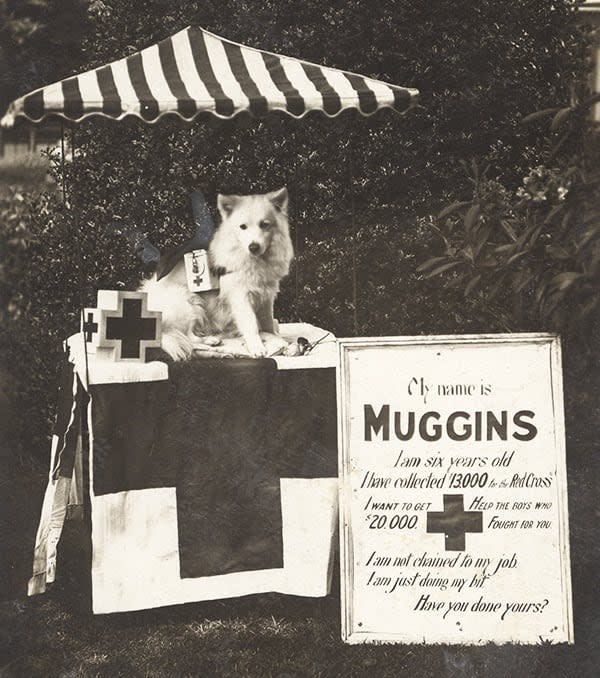
Muggins would wander around downtown Victoria with his donation boxes strapped to him, and return when they were full. This picture was taken in 1918. (Saanich Archives/Canadian Red Cross)
Jo-Anne Gallagher realized the dog in their shed was Muggins after watching a TV news story. A friend who had been clearing their attic gave the mount to her husband, Paul Sommerard.
"It was around Remembrance Day — there was a story on there about Muggins," Gallagher said. "I said to Phil, 'That looks like the dog we have in the shed.' And so we checked it out.
"I tracked down the person they were talking to on the interview and I contacted him. I gave him a phone call and he seemed to be pretty excited."
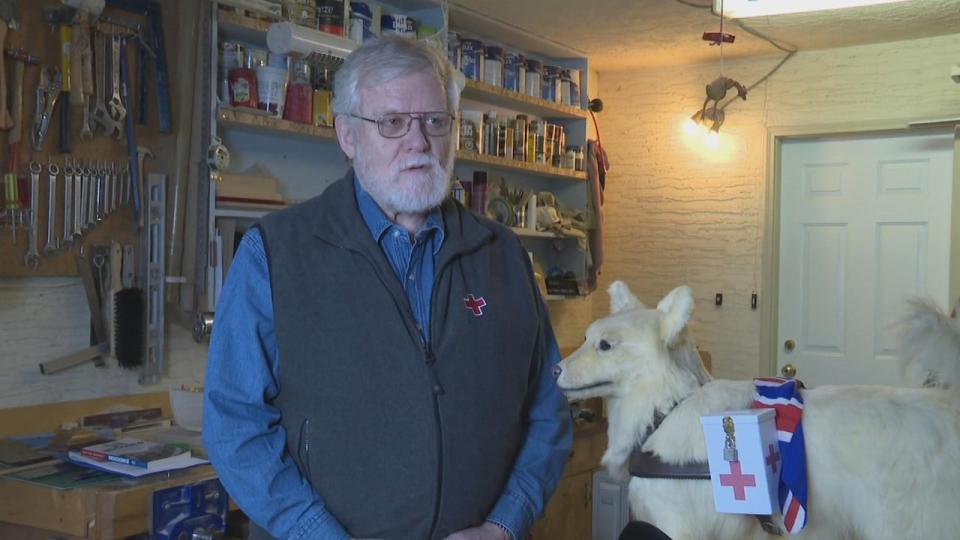
Paul Jenkins, a volunteer historian for the B.C.-Yukon Red Cross History Project, said he initially thought the dog had deteriorated and been disposed of. (CHEK News)
That person is Paul Jenkins, volunteer co-ordinator for the B.C.-Yukon Red Cross History Project. After arriving at the shed, he said he immediately knew it was Muggins.
"No doubt in my mind," the historian said. "We've got pictures of these stamps … the bottom of the base has got stamps on it from the taxidermist."
Sommerard said Jenkins and the Red Cross had been "extensively" searching for the mount since it disappeared, and that the historian was over the moon to find it.
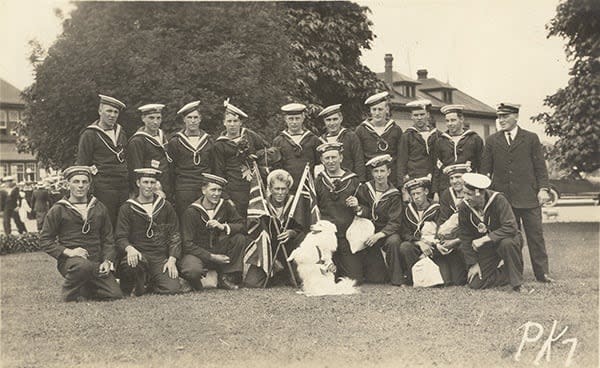
A postcard featuring Muggins with members of the Royal Naval Canadian Volunteer Reserve (RNCVR) in 1918. (Saanich Archives/Canadian Red Cross)
Muggins' rediscovery has prompted new appreciation for his fame and a move to have his mount displayed more prominently in Victoria.
"The Red Cross doesn't want to be the centre of the story," Jenkins said.
"I think that the centre of the story is the fact that … he's a community asset if you will. The community … came together to support a need."
Pictures with royalty
According to the Red Cross, the one-foot-tall Muggins became something of a tourist attraction in Victoria, visiting ferries and ocean liners that stopped in the harbour.
One biography notes the dog was owned by a Victoria woman named G.W. Woodward.
Muggins became popular among people at a time when morale was fluctuating, Jenkins said.
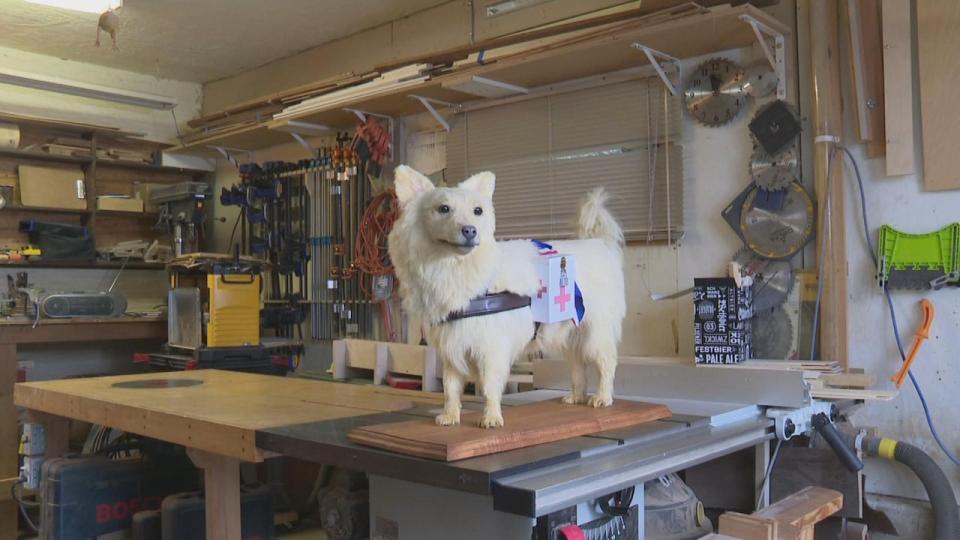
The mount was in a dilapidated condition after decades of being stored in an attic, according to Jenkins, and had to be restored by another taxidermist, Dulchis Mortem in Mission, B.C. (CHEK News)
"He represented the desire at that time to support the need, which was providing help to the soldiers in the First World War," he said.
"It was not uncommon across the country. We found at least three other dogs in Victoria that were used [for donations] in the First World War, Second World War. But Muggins by far was the lead in that field."
The dog was famous enough to get a picture with Edward, Prince of Wales, who would later become King Edward VIII.
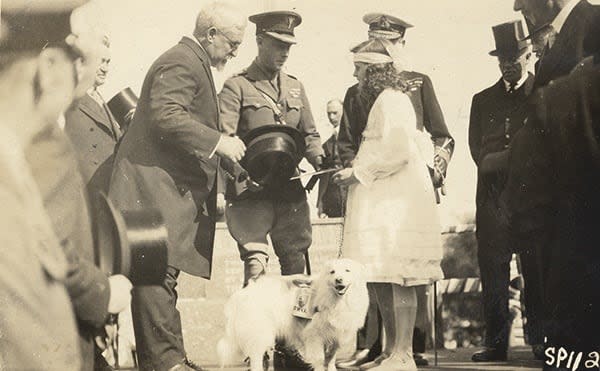
A postcard of Muggins the dog and Edward, the Prince of Wales, with a young Doris Baker presenting a photograph of Muggins to the prince. Then-B.C. premier John Oliver is on the left. (Saanich Archives/Canadian Red Cross)
A surprise discovery
Gallagher and Sommerard said they received the mount from a friend, Dave Citra, who was cleaning out his attic around 2018.
Jenkins said after being used in a variety of fundraising events, Muggins was placed in the Army Navy Veterans Club building in Victoria around 1955 — then disappeared after the building went through renovations.
At the time, Dave's father, John Citra and his mother both worked nearby.
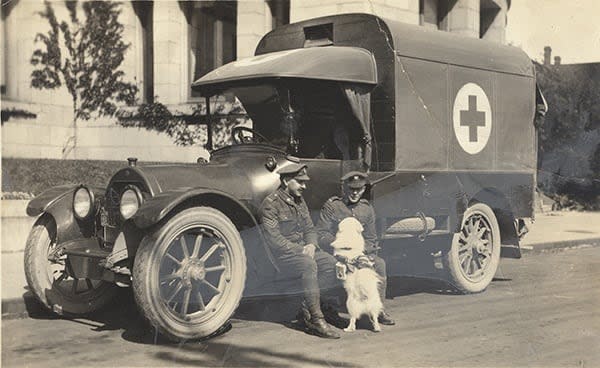
A postcard of Muggins with two soldiers and a Red Cross ambulance, taken in 1919. (Saanich Archives/Canadian Red Cross)
"Through the investigation, we find out that the Citras brought Muggins to their home," Jenkins said. "Why, exactly, we don't know, but I think they were dog-crazy and somebody probably said, 'Do you want the dog?'"
After a few years, according to the historian, Muggins was put in the attic and forgotten about.
In 2018, a potential sale of the house led to the mount's rediscovery.
Grant Hayter-Menzies, a Sidney, B.C.-based author who wrote a biography of the dog, covered the costs of Muggins' restoration, and donated the Union Jack kerchief that is currently tied around the taxidermy mount's back. He says his grandfather carried the kerchief into battle during the First World War.
Jenkins said he is now in talks with the Costume Museum at Government House, the B.C. lieutenant governor's official residence, to have Muggins on display there permanently — which is likely to come to fruition in spring.

